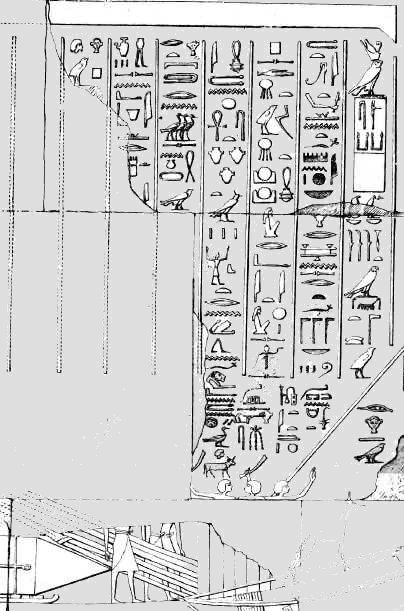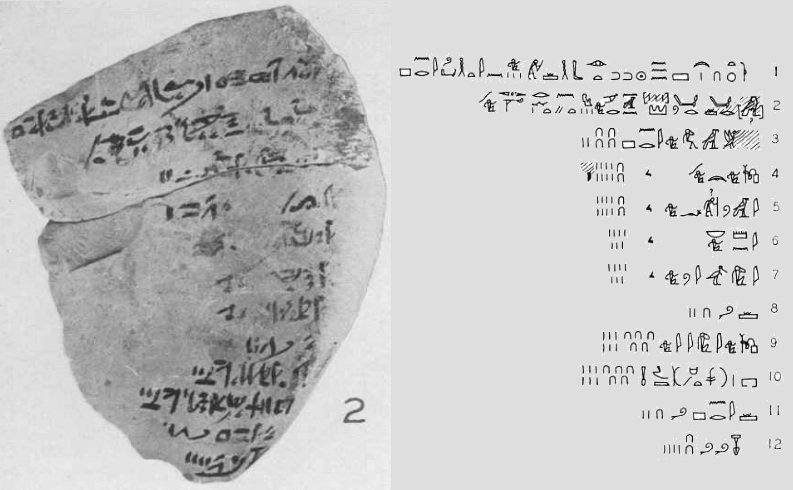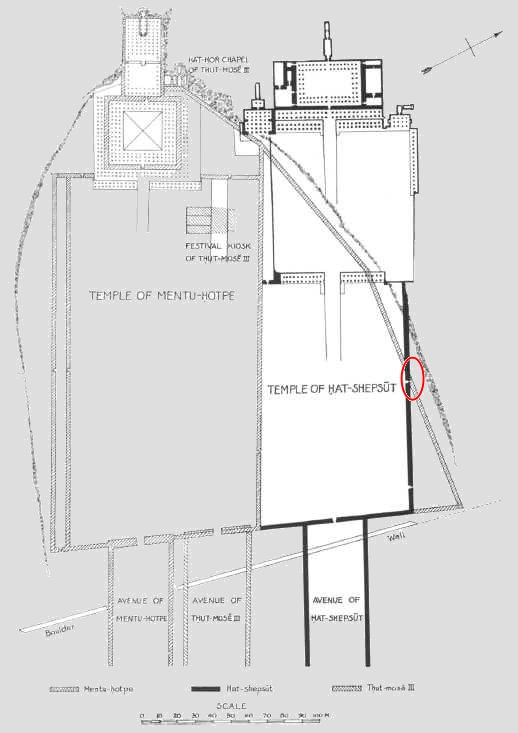 |
Minmose |
last update:
25.12.2010
|
Historical Data
| Name |
Title |
Statues |
Origin |
Tomb |
Minmose (Min-mose)
mnw-msjw |
Overseer of the Granary |
|
? |
MMA59 (later reused during the 21st Dynasty by the "Mistress of the House" Henettawy) |
| Wife: unknown |
|
|
|
|
| Parents: |
|
|
|
|
| Father: unknown |
|
|
|
|
| Mother: unknown |
|
|
|
|
| Brothers: |
|
|
|
|
| none known |
|
|
|
|
| Sisters: |
|
|
|
|
| none known |
|
|
|
|
| Children: |
|
|
|
|
| none known |
|
|
|
|
Sources:
Naville, Temple of Deir el-Bahari, Part VI, 1908;
Hayes, W. C., Ostraka and name stones from the tomb of Sen-Mut (no. 71) at
Thebes, PMMA 15, 1942;
|
|
A person called Minmose is testified several times during the reign of
Hatshepsut - if it is the same persons. |
|
The inscription of the southern wing of the first (lower) portico mentions an "Overseer
of the Granary"
called Minmose who participated in the transportation of the obelisks from Aswan
to Thebes (see figure below). |

|
Scene from the temple Djeser djeseru which shows the transportation of the obelisks (taken from: Naville, Temple of Deir
el-Bahari, Part VI, 1908, plate CLIV). The "Overseer of the Granary" Minmose
is the person in the middle of the three which were depicted gesticulating, in
the case of Minmose using a stick or a tool - most likely to give command
- at the stem of the barque which transport the obeliisks.
According to Naville the names (from right to left) of the "Head of the
Domains of the Queen", Tetaenra, the
"Overseer of the Granary", Minmose, and the prince of This, Satep-ah,
appears to be inscribed over others which had been erased. Remains of some signs
support this. |
| This Minmose has also been identified with the donator of a pot whose fragments
had been discovered by Donald Ryan in KV60, which was assigned to the tomb of the nurse of Hatshepsut, called Sat-Ra (=
Si-Ra). The
docket
of the jar fragments that once contained olive oil had been donated by the "Overseer of the Granary, Minmose"
and was the reason to date the tomb into the reign of Hatshepsut (in contrast to H. Carter who dated the tomb at its discovery into the time of Thutmos IV). |
| Among the inscribed ostraca from the area of the tomb of Senenmut, TT71, Hayes (Hayes, 1942)
listed under no. 115 (on plate Tafel XXI) the names of two person, Ahmose
and Minmose. However, the short inscription gives no titles for the persons,
nevertheless this may have been the same Minmose who has been mentioned at Deir el-Bahari
and in KV60. |
| During his excavation in the temple of Hatshepsut Winlock
discovered during the season 1930-31 an inscribed limestone flake in the 2nd (middle)
court
(see below, left a photo, right a copy of the text, both figures taken from: Hayes; Thutmoside Ostraca from DeB,
1960, Tafeln IX und IXa), which reports about "serfs making a corvée". i.e. they
had to transport stones. Furthermore, the inscriptions tells that these workers
were in the charge of Minmose. |

| 1. |
|
Regnal year 10, month of Shomu, day 20. Making a corvée for hauling stone |
|
|
| 2. |
|
i[n] Djeser-djeseru: the serfs who are in the charge of Minmose.
|
|
|
| 3. |
|
[the Scribe?] Pachrod, |
(blocks of) stone,
|
42 |
| 4. |
|
the Scribe Ahmose, |
" |
28 |
| 5.
|
|
Yauef
|
" |
28 |
| 6.
|
|
Nebamin;
|
" |
7 |
| 7.
|
|
Ibi |
" |
7 |
| 8.
|
|
Total
|
" |
112 |
| 9.
|
|
the Scribe Iy |
" |
56 |
| 10. |
|
the House of the King's Wife, the justified |
" |
56 |
| 11.
|
|
Total (blocks of) stone,
|
" |
112 |
| 12. |
|
Combined (total) |
" |
224 |
| Translation of the inscription by Hayes (loc. cit.) |
| Again the inscription gives no title for Minmose. Certainly,
his is in charge for some workers so it may be assumed that he had an official
position but this ostracon does not testify that he is identical with "Overseer
of the Granary" with the same name. |
| Winlock (BMMA - Egyptian Expedition 1923-24) identified the
owner of tomb MMA59 with the "Overseer of the Granary,
Minmose" who is depicted participating in the transport of the obelisks. Tomb MMA59
is located north of the temple area directly next to the enclosure wall of the
lower court of the DeB-temple of Hatshepsut, there were west of the small gate
the old enclosure wall of the temple of Mentuhotep II is crossed by the newer
wall of the Hatshepsut precinct. |
| Winlock reported that this is an old tomb from the 11th Dynasty (Winlock,
Excavations at DeB 1911-31. New York 1942, S. 208). If so Minmose had reused the
tomb. |

| Location of the tomb MMA59 (red oval) according to Winlock (1942). |
| According to Winlock (loc. cit.) the burial of Minmose was most
likely plundered and later reused during 21th Dynasty by the "Mistress of
the House, Henettawy"
whereby not only the most likely empty tomb had been reused but also remains
from the coffin of Minmose had been used to block the entrance. |
| However, the report published by the MMA does not contain any
information on what findings (inscriptions?) Winlock had identified this Minmose
with the "Overseer of the Granary, Minmose" who was shown participating in
the transport of the obelisks. |
| On the Sinai on a small stela the scribe Minmose immortalized
himself as: "Oversser of the treasury and Head (xrp) of [….] of the
"God's Wife" (Černý, J., The Inscriptions OF Sinai by Alan H. Gardiner and T.
Eric Peet. 2nd ed., London 1952, no. 233). The reference to the "God's Wife" may
date him into the time of the regency of Hatshepsut (Helck, Verwaltung, 1958),
but finally again it is not possible to identify this men with certainty with
the "Overseer of the Granary, Minmose". |
|


